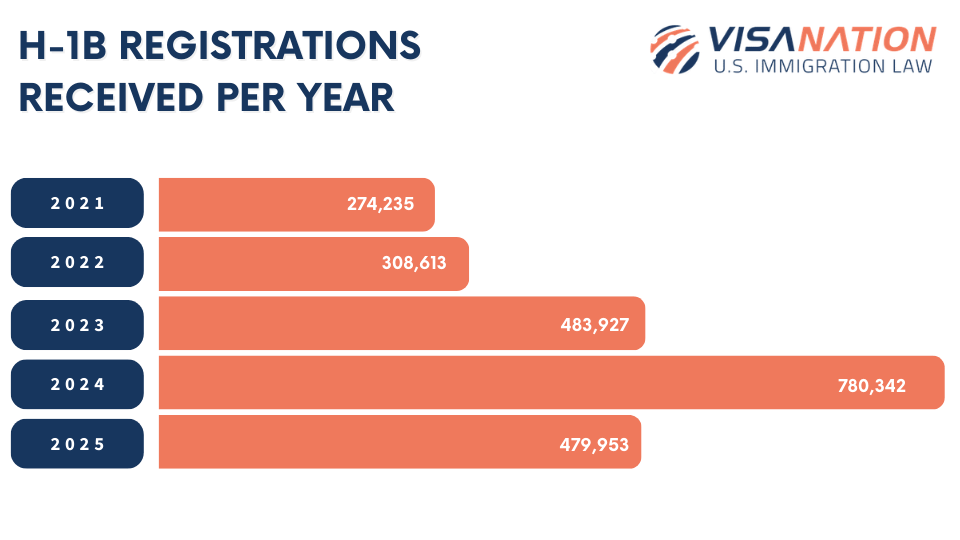 News
News
Hiring talent under H-1B visas is increasingly complex, expensive, and time-consuming. Companies face long wait times, strict quotas, and rising legal costs, making it harder to scale engineering teams quickly. Nearshore development in Latin America offers a smart alternative. By leveraging skilled engineers in cities like Guadalajara, Bogotá, and Santiago, U.S. firms gain access to high-quality talent, overlapping time zones, and cost-effective operations. This approach allows faster scaling, smoother collaboration, and more predictable project delivery.
Relocating H-1B Talent to Mexico: Myth vs Reality on Low Flat Tax Rates to H1B Alternatives
One appealing idea in the conversation about nearshore development teams is relocating H-1B workers (or similar talent) to Latin American hubs, especially Mexico, under the assumption that individuals could benefit from a super low flat tax rate, say, around 2.5% on incomes up to USD 190,000 per year. This assumption seems to derive from Mexico’s tax regime for self-employed or small business individuals under the RESICO (Régimen Simplificado de Confianza). Under RESICO, qualifying self-employed individuals can indeed pay a very low rate, between 1% and 2.5%, on their gross income, but only up to MXN 3.5 million per year, which is roughly USD 180,000 to 200,000 depending on exchange rates.
That said, this regime applies to specific criteria: being self-employed or operating under certain simplified regimes, being properly registered with the tax authorities, and often foregoing some of the deductions or benefits that regular full employment tax structures offer. For someone relocating under a standard employment contract (not as a self-employed contractor), the progressive income tax brackets in Mexico go from about 1.92% up to 35% for residents.
Best LATAM Cities To Outsource To When Avoiding The H-1B Hassle
When companies face H-1B visa bottlenecks, high relocation costs, and the unpredictability of U.S. immigration quotas, turning to nearshore development in Latin America has become a smart, long-term alternative. The region now offers highly skilled engineers, overlapping time zones, and cost-effective operations without the red tape of moving staff across borders. Below are the top Latin American cities that deliver the most value and stability for U.S. companies looking to outsource or expand development teams without the H-1B struggle.
1. Guadalajara, Mexico
Guadalajara stands out as the “Silicon Valley of Mexico,” and the name fits. Over the past five years, Guadalajara's tech employment has grown by roughly 60%, driven by strong academic pipelines and corporate investments from firms like IBM, Oracle, and Intel. Local universities in Jalisco continue to produce a large volume of STEM graduates every year, keeping the talent market fresh and competitive. Developers in Guadalajara often work with U.S.-based teams and have a growing reputation for agility and bilingual communication, making collaboration smooth.
From a financial standpoint, Guadalajara provides substantial cost savings. Even as tech salaries rise, the city remains significantly more affordable than major U.S. metros. Office spaces are still reasonably priced, and the city’s professional infrastructure, from coworking spaces to legal services, has matured enough to support long-term, fully operational remote teams. Add in the shared time zones and cultural proximity, and Guadalajara becomes one of the easiest places for U.S. firms to establish dedicated engineering teams without the hassle of visas or lengthy relocations.
2. Monterrey, Mexico
Monterrey has quietly become Mexico’s fastest-growing tech city. According to CBRE’s “Scoring Tech Talent LATAM 2024” report, Monterrey’s technology workforce expanded by over 100% in the past five years. While smaller than Guadalajara or Mexico City, it makes up for that with speed, innovation, and business sophistication. Monterrey’s ecosystem benefits from its industrial heritage, corporate operations, finance, and IT services blend seamlessly here, making it easy for new U.S. entrants to set up compliant, stable teams.
Tech salaries in Monterrey are competitive within Latin America but remain well below U.S. pay levels, allowing companies to attract senior engineers and technical leads at a fraction of the cost. Many developers have prior experience working for international clients, and the bilingual talent pool is widening every year. Monterrey’s geographical closeness to the U.S. border adds logistical advantages such as frequent direct flights, similar work hours, and easier site visits. For U.S. firms looking for an immediate alternative to H-1B relocation, Monterrey provides both operational efficiency and cultural alignment.
3. Bogotá, Colombia
Bogotá has rapidly evolved into one of Latin America’s most important technology hubs. It is home to over 110,000 tech professionals, with steady annual growth fueled by Colombia’s nationwide digital transformation strategy. The city’s universities, including Universidad de los Andes and Universidad Nacional, are producing thousands of software and IT graduates every year. This influx of new talent ensures that U.S. companies won’t face the scarcity or bidding wars that are common in the U.S. or Western Europe.
Beyond the talent pool, Bogotá is appealing for its modern infrastructure and growing startup ecosystem. The government has rolled out multiple initiatives to attract tech investment and improve digital skills training. Developer salaries average around $34,000 annually, which is rising but still affordable compared to U.S. standards. For companies focused on fintech, SaaS, and data-driven applications, Bogotá’s developers offer an ideal blend of technical skills, English fluency, and availability. The city’s timezone also overlaps perfectly with Eastern and Central U.S. hours, minimizing communication lags and productivity losses that often plague offshore outsourcing models.
4. Medellín, Colombia
Medellín’s transformation from a manufacturing city to a recognized innovation hub is one of Latin America’s most impressive economic stories. Often referred to as the “City of Eternal Spring,” Medellín attracts both startups and established tech firms because of its modern infrastructure and growing pool of tech professionals. The city is home to Ruta N, a massive innovation district that brings together academia, business, and government to promote research, entrepreneurship, and digital skills.
What sets Medellín apart is its culture of collaboration and adaptability. Developers here are known for being product-focused, agile, and deeply engaged in creative problem-solving. The cost of labor is slightly lower than Bogotá’s, and the overall quality of life is excellent, two factors that make retention rates stronger than in larger capitals. For U.S. companies building innovation-oriented projects, Medellín offers a perfect balance between technical quality, affordability, and long-term sustainability.
5. Buenos Aires, Argentina
Buenos Aires continues to lead in software development talent in South America. With more than 115,000 active developers and around 27,000 STEM graduates each year, the city offers both depth and diversity in technical expertise. Argentina’s education system emphasizes engineering, mathematics, and computer science, and the result is a steady flow of well-trained professionals familiar with global technologies like Python, React, and Java. Many Buenos Aires developers also work for international clients, which means they understand Western workflows and maintain high English proficiency.
The cost benefits are notable, though Argentina’s economic volatility does require careful financial planning. Many outsourcing arrangements now use USD contracts to bypass currency fluctuations. Still, for companies prioritizing quality and communication over ultra-low costs, Buenos Aires provides exceptional value. The city’s strong design culture also makes it ideal for companies building user-centric software and digital products.
6. Santiago, Chile
Santiago is Chile’s business and technology center, offering a blend of economic stability and innovation that’s rare in the region. Its government-backed startup programs, like Start-Up Chile, have attracted hundreds of international entrepreneurs and engineers to set up operations locally. Santiago’s tech workforce, estimated at over 140,000 professionals, continues to grow thanks to strong educational institutions and foreign investment.
Unlike other Latin American markets, Chile’s regulatory and legal frameworks are highly predictable. Companies find it easy to establish compliant contracts, banking operations, and long-term remote work structures. While salaries in Santiago can be higher than in Colombia or Argentina, the trade-off is reliability and smooth corporate governance. For U.S. businesses that prioritize operational transparency and predictable costs, Santiago serves as one of the most business-friendly alternatives to hiring under H-1B constraints.
Why These Cities Are Outsourcing Powerhouses
Outsourcing to these LATAM hubs isn’t just about saving money; it’s about regaining control. Each of these cities offers something that H-1B hiring can’t: immediate scalability, time-zone compatibility, and freedom from immigration bottlenecks. Mexico provides proximity and cultural similarity, Colombia offers rapid growth and young talent, Argentina contributes advanced technical expertise, and Chile delivers unmatched stability. Together, they form a nearshore ecosystem that U.S. firms can rely on for long-term collaboration. In a global market where innovation cycles move faster than immigration approvals, LATAM cities are no longer the alternative. They are becoming the preferred strategy for companies that value agility, cost efficiency, and modern remote collaboration.
Scale Smarter With Blue Coding!
Blue Coding helps U.S. companies bypass H-1B challenges by building nearshore development teams across Latin America. Our engineers in cities like Guadalajara, Bogotá, and Santiago deliver top-tier skills, work in overlapping time zones, and integrate seamlessly with your projects. We handle recruitment, compliance, and onboarding, so you can focus on growth and innovation. Stop waiting on visas and start scaling faster. Contact us today to build your agile, high-performing nearshore team. We also offer a complimentary strategy call to address all your queries and concerns!




